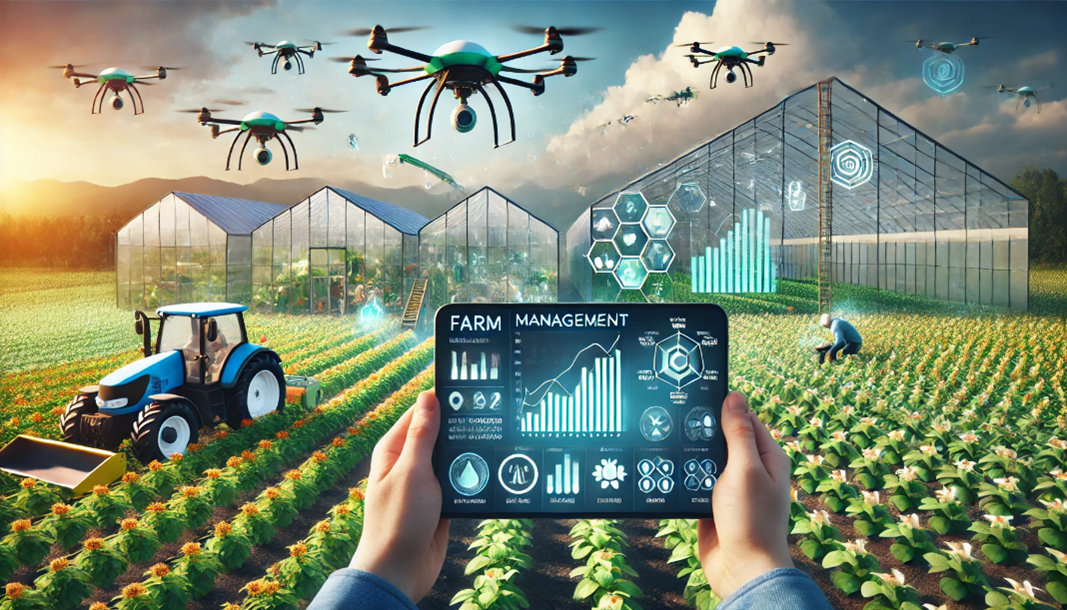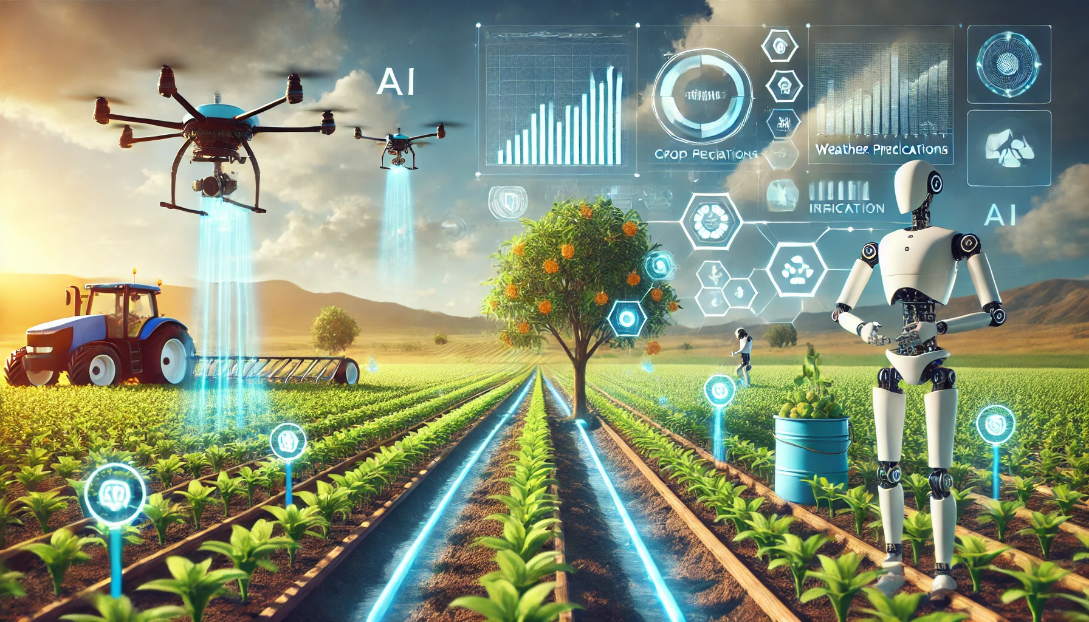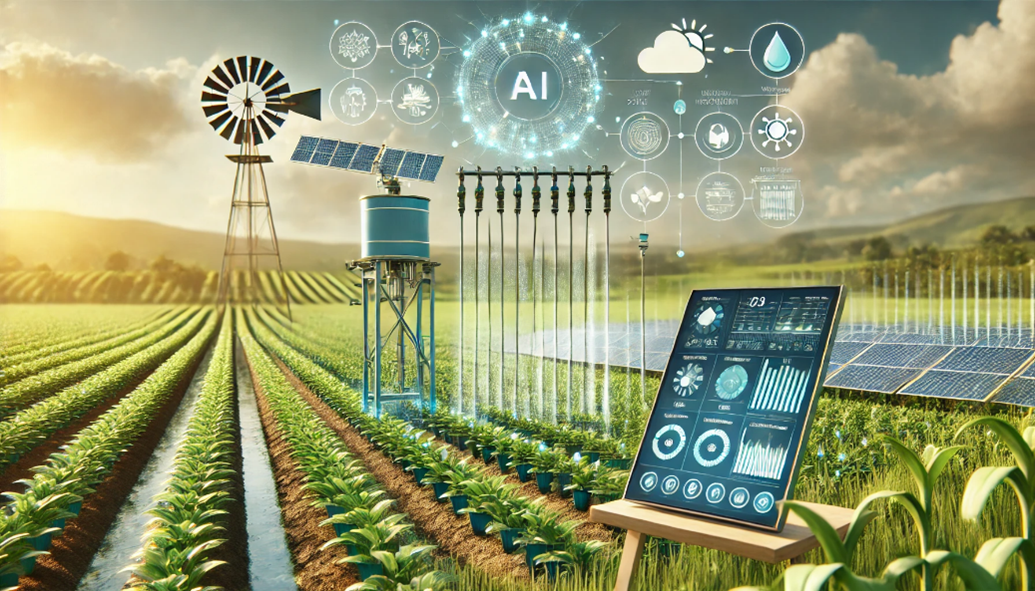How can AI help optimize crop yields while minimizing resource usage?

How can AI help optimize crop yields while minimizing resource usage?
by Maximilian 02:13pm Jan 31, 2025

AI can play a transformative role in optimizing crop yields while minimizing resource usage by leveraging data-driven insights, precision agriculture techniques, and advanced modeling. Here’s how AI contributes to sustainable and efficient farming:
1. Precision Agriculture
AI enables precise application of resources to maximize productivity:
Soil Analysis: AI-powered sensors and models assess soil composition, moisture levels, and nutrient content to recommend optimal planting strategies and fertilizer application.
Variable Rate Technology (VRT): AI systems guide machinery to apply water, seeds, and fertilizers in precise amounts and locations, reducing waste and improving efficiency.
Targeted Pest Control: Using AI-driven drones or robots to identify and treat pest-affected areas, reducing pesticide use.

2. Predictive Analytics
AI models analyze data to forecast and optimize agricultural processes:
Weather Prediction: Advanced models predict weather patterns, helping farmers plan planting, irrigation, and harvesting schedules.
Yield Forecasting: AI analyzes historical and real-time data to estimate crop yields, enabling better resource allocation and market planning.
Disease Prediction: Early detection of plant diseases through AI-driven image recognition or sensor data allows for timely interventions.
3. Irrigation Management
AI systems optimize water usage:
Smart Irrigation Systems: AI integrates data from weather forecasts, soil sensors, and crop types to deliver the right amount of water at the right time.
Drought Management: Predicting water stress and suggesting alternative irrigation methods or drought-resistant crops.

4. Sustainable Resource Usage
AI minimizes environmental impact by optimizing input use:
Fertilizer Optimization: AI recommends precise nutrient levels based on crop needs and soil health, reducing over-fertilization and runoff.
Energy Efficiency: AI-powered automation reduces fuel consumption in machinery and improves energy usage in greenhouse farming.
5. Crop Monitoring and Health Management
AI-driven tools monitor crops for improved health and yield:
Satellite and Drone Imaging: AI analyzes aerial images to detect issues like nutrient deficiencies, pest infestations, or water stress.
Computer Vision: Cameras and AI algorithms identify crop health problems at the plant level, enabling early and targeted action.
6. Farm Management Systems
AI integrates data for better decision-making:
Data Integration Platforms: Combining inputs from sensors, drones, and weather data to provide actionable insights to farmers.
Digital Twin Models: Simulating farm environments to test different strategies (e.g., planting patterns or irrigation schedules) without real-world risks.

7. Market and Supply Chain Optimization
AI helps align crop production with market demand:
Demand Forecasting: Predicting market trends to guide farmers on what and how much to plant.
Supply Chain Optimization: Reducing post-harvest losses by predicting spoilage risks and optimizing storage and transport logistics.
Challenges to Address
While AI offers significant benefits, challenges include:
Access to Technology: Ensuring small-scale and resource-poor farmers can afford and use AI tools.
Data Quality and Availability: Reliable AI requires extensive, high-quality data, which may be lacking in certain regions.
Ethical Concerns: Addressing issues around data ownership, privacy, and equitable distribution of AI-driven benefits.
Conclusion
AI helps farmers produce more food with fewer resources by enabling precision, sustainability, and resilience in agriculture. As AI technology continues to advance, it has the potential to revolutionize farming practices, contributing to global food security while preserving the environment.






